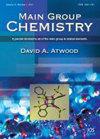微生物燃料电池在同步发电过程中活性黄145和ponceau S的脱色机理
IF 1.3
4区 化学
Q3 CHEMISTRY, MULTIDISCIPLINARY
引用次数: 1
摘要
环境污染随着世界人口的增长而日益严重。偶氮染料是造成环境污染的重要原因之一。微生物电化学电池是一种利用电力等可再生资源产生能量的生物技术系统。本研究研究了微生物燃料电池中两种不同偶氮染料的脱色同时发电。并对pH值的变化、化学需氧量分析、小时脱色率、染料光谱扫描等进行了研究。在微生物燃料电池中分别对浓度为10 mg/L、20 mg/L、40 mg/L的活性黄145染料和浓度为20 mg/L、40 mg/L的Ponceau S染料进行了测试。结果表明,活性黄145在达到100%脱色率时获得的最大电压为0.11 V,在浓度为10 mg/L时获得的最大电压为0.24 V,在浓度为20 mg/L时获得的最大电压为100%脱色率。总之,微生物燃料电池似乎是处理纺织偶氮染料废水的有前途的工具,并且计算方法可以用于估计废水中发现的复杂有机分子的降解机制。本文章由计算机程序翻译,如有差异,请以英文原文为准。
Decolorization mechanisms of reactive yellow 145 and ponceau S in microbial fuel cells during simultaneous electricity production
Environmental pollution is increasing in parallel with the increase in the world population. Azo dyes are one of the most important causes of environmental pollution. Microbial electrochemical cells are biotechnological systems that generate energy from renewable sources such as electricity. This study investigated simultaneous electricity generation with the decolorization of two different azo dyes in microbial fuel cells. And also, changes in pH values, chemical oxygen demand analysis, hourly color removal rate, dye spectral scanning were investigated. Reactive Yellow 145 dye with a concentration of 10 mg/L, 20 mg/L, and 40 mg/L, and Ponceau S dye with 20 mg/L and 40 mg/L concentration were tested in microbial fuel cells, respectively. Results indicate that the maximum voltage obtained was 0.11 V at the same time as the 100% decolorization rate in Reactive Yellow 145 and was achieved at a concentration of 10 mg/L also, the maximum voltage obtained was 0.24 V at the same time as the 100% decolorization rate in Ponceau S. It was achieved at a concentration of 20 mg/L. In conclusion, microbial fuel cells appear to be promising tools in treating textile azo dye wastewaters, and computational methods can be applied to estimate the degradation mechanisms of complex organic molecules found in wastewaters.
求助全文
通过发布文献求助,成功后即可免费获取论文全文。
去求助
来源期刊

Main Group Chemistry
化学-化学综合
CiteScore
2.00
自引率
26.70%
发文量
65
审稿时长
>12 weeks
期刊介绍:
Main Group Chemistry is intended to be a primary resource for all chemistry, engineering, biological, and materials researchers in both academia and in industry with an interest in the elements from the groups 1, 2, 12–18, lanthanides and actinides. The journal is committed to maintaining a high standard for its publications. This will be ensured by a rigorous peer-review process with most articles being reviewed by at least one editorial board member. Additionally, all manuscripts will be proofread and corrected by a dedicated copy editor located at the University of Kentucky.
 求助内容:
求助内容: 应助结果提醒方式:
应助结果提醒方式:


